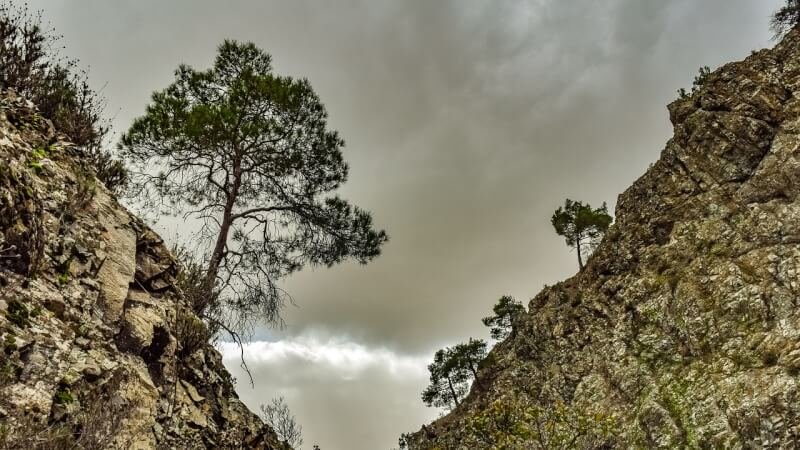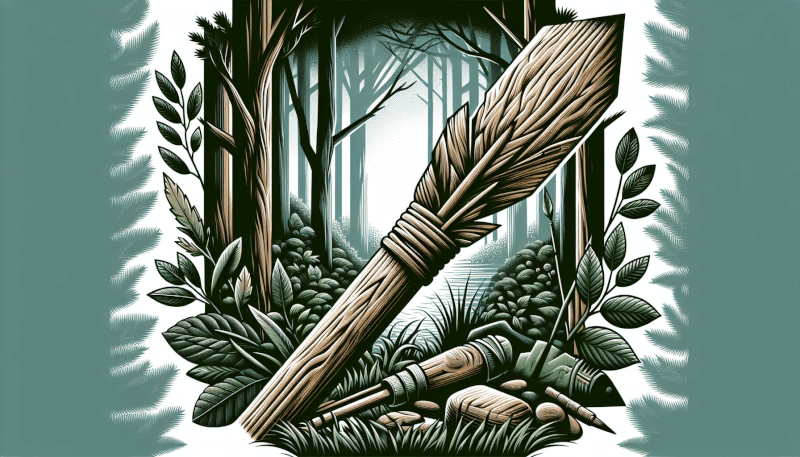Are you ready to embark on an extraordinary adventure into the wilderness? Look no further than the “Ultimate Guide to Wilderness Living: Surviving with Nothing But Your Bare Hands and What You Find in the Woods.” In this captivating guide, you will discover the essential skills and knowledge needed to thrive in the untamed beauty of nature. From building shelter and finding food to starting a fire and navigating through the wilderness, this comprehensive guide will equip you with the necessary tools to survive and truly connect with the wild. Get ready to embrace the challenge and unlock the secrets of wilderness living like never before.
Shelter

Finding a suitable location
When it comes to survival in the wilderness, finding a suitable location for your shelter is crucial. Look for a spot that is well-drained and elevated to avoid potential flooding. Pay attention to natural features such as large rocks or fallen trees that can provide added protection. Avoid areas with hazardous conditions like cliffs or areas prone to landslides. Keep in mind that you’ll also want to consider proximity to water sources and potential food sources.
Building a debris shelter
One of the simplest and most effective shelters you can build in the wilderness is a debris shelter. Start by finding a sturdy branch or fallen tree to serve as the foundation. Then, gather leaves, branches, and any other debris you can find to create a thick insulation layer on top. Be sure to leave a small entrance for ventilation, and make sure the shelter is large enough to comfortably accommodate your body.
Constructing a lean-to
A lean-to shelter is another great option, especially if you have a tarp or poncho available. Find two trees or sturdy branches and place one end of your tarp or poncho over them. Use rocks or sticks to secure the tarp down on the ground. This type of shelter provides good protection from rain and wind while still allowing airflow.
Creating a natural shelter
If you can find a natural shelter, such as a cave or overhang, take advantage of it. These structures can provide excellent protection from the elements. However, be sure to check for any signs of animal activity or other potential dangers before settling in.
Building a snow cave
In snowy conditions, building a snow cave can be a lifesaver. Start by digging a hole in the snow that is large enough for your body. Dig a separate entrance tunnel that leads down into the main chamber to allow for ventilation. Pack the walls and ceiling of the cave tightly with snow to create a sturdy structure. Just be sure to leave a small opening for fresh air.
Water
Identifying water sources
When it comes to survival, finding a reliable source of water is vital. Keep an eye out for streams, rivers, ponds, or any other bodies of water. If you’re in a mountainous area, melting snow or ice can also be a source of water. Pay attention to animal tracks or signs of vegetation as they can often lead you to water sources.
Purifying water
It’s crucial to purify any water you collect in the wilderness to avoid ingesting harmful bacteria or parasites. The most effective method is boiling the water for at least 5 minutes. If you don’t have the means to boil water, you can use water purification tablets or a portable water filter, which can help remove bacteria and other contaminants.
Collecting rainwater
Rainwater can be a valuable resource in the wilderness. If you have a tarp or poncho, set it up to collect rainwater. Place a container or dig a hole beneath the lowest point of the tarp to collect the water efficiently. Remember to purify the water before drinking.

Finding natural springs
Natural springs are an excellent source of clean, fresh water in the wilderness. Look for areas where the ground appears saturated or where water is trickling out from the earth. Springs are often found near rock formations or at the base of hills.
Creating a solar still
In a pinch, you can create a solar still to obtain drinking water. Find a clear piece of plastic or a large plastic bag and dig a hole in the ground. Place a container in the center of the hole. Then, cover the hole with the plastic, making sure it’s airtight. Place a small stone in the middle of the plastic, directly above the container, creating a funnel shape. As the sun heats the ground, moisture will evaporate, condense on the plastic, and drip into the container.
Fire
Gathering firewood
When it comes to starting a fire, having the right type and amount of firewood is essential. Look for dry dead branches or fallen trees. Collect both small sticks and larger logs to create a sustainable fire. Always gather more firewood than you think you’ll need to keep the fire going throughout the night.
Building a fire pit
A well-constructed fire pit can help contain your fire and minimize the risk of spreading. Clear the area of any dry leaves or debris. Dig a shallow pit and create a ring of rocks or logs around it. This will help keep the fire contained and prevent it from spreading to surrounding vegetation.
Starting a fire with friction
If you don’t have matches or a lighter, you can start a fire using friction. One common method is the bow drill technique. Choose a dry, softwood stick as your drill and another piece of wood as your fire board. Use a shoelace or other cordage to create a bow and a rock as a socket. By rotating the bow back and forth, you can create enough friction to generate an ember that can ignite your tinder.
Creating a fire with a battery
In some situations, you may have access to a battery but no other traditional fire-starting tools. You can create a fire by short-circuiting the battery. Touch one end of the battery to a piece of steel wool, and then touch the other end to the wool. The steel wool will ignite, providing you with a flame to start your fire.
Using fire starters
Carry fire starters such as waterproof matches, a magnesium fire starter, or a ferrocerium rod. These tools can provide a reliable way to start a fire even in wet conditions. Combine them with dry tinder and firewood to ensure a successful fire.
Food
Identifying edible plants
Having knowledge of edible plants in the wilderness can be a game-changer for your survival. Learn to recognize plants such as dandelions, cattails, wild berries, and other edible vegetation. It’s essential to study and identify these plants before an emergency situation so that you can confidently identify them later.

Hunting small game
In a survival situation, hunting small game can provide a significant source of protein. Learn to construct simple traps like snares or deadfalls to catch small animals such as rabbits or squirrels. Use natural materials and take into account animal behaviors and tracks to increase your chances of success.
Fishing in natural water sources
Fishing is another reliable way to find food in the wilderness. Craft a simple fishing rod using a sturdy stick, fishing line, and a hook. Look for areas with fish activity, such as deep pools or shallow streams. Experiment with different bait options, such as insects or small pieces of food.
Trapping animals
Trapping can be an effective way to catch larger game in the wilderness. Learn to build various types of traps, such as spring snares or deadfalls, to increase your chances of success. Study animal tracks and movements to identify suitable locations for trapping.
Foraging for insects
While not everyone’s first choice, insects can be a valuable source of food in the wilderness. Look for edible insects such as worms, grubs, or crickets. Learn which insects are safe to eat and how to properly prepare them for consumption to ensure the best possible nutrition.
Navigation
Using natural landmarks
Navigating through the wilderness can be challenging, but by using natural landmarks, you can stay on track. Mountains, rivers, lakes, or distinctive rock formations can serve as reliable reference points. Take note of these landmarks and use them to orient yourself in the right direction.
Creating a compass with a needle and leaf
In the absence of a compass, you can create a simple compass using a needle and a leaf. Rub the needle against clothing to magnetize it. Place the needle on a flat leaf floating in water. The needle will align with the Earth’s magnetic field, indicating the north-south direction.
Navigating by the stars
For clear nights, using the stars for navigation can be a great skill to have. Familiarize yourself with the North Star (Polaris) and learn how to identify other key constellations like the Big Dipper or Orion. Use these constellations as guides to determine your direction.
Building a primitive map
Creating a primitive map can help you keep track of your surroundings and plan your route. Sketch a rough layout of the area you’re exploring, noting important landmarks like rivers, hills, or significant vegetation. As you navigate, update the map with additional details to ensure accuracy.

Using a simple sundial
A simple sundial can help you determine the time of day and approximate direction. Find a straight stick and secure it upright in the ground. Place smaller sticks around the base to mark the shadow cast by the sun at different times of the day. By observing the position of the shadow, you can estimate the time.
Tools and Weapons
Crafting a stone knife
In the absence of a knife, you can create a stone knife using flint or other hard rocks. Look for rocks with a sharp edge and shape them by striking them against harder surfaces. Use natural fibers or cordage to secure the stone to a wooden handle, and you’ll have a functional cutting tool.
Building a bow and arrow
A bow and arrow can be a valuable hunting tool in the wilderness. Find a flexible, sturdy branch for your bow and carve it into shape. Use cordage or natural fibers to create a string. Craft arrows from straight sticks and attach arrowheads made from sharpened stones or bone.
Creating a fishing spear
If you’re near a water source, a fishing spear can be an effective way to catch fish. Find a long, sturdy branch and shape one end into a point. Use cordage or vines to secure the spearhead, which can be made from sharpened bone or stone. Practice your aim and precision to increase your chances of catching fish.
Making a primitive trapping device
Trapping devices can be invaluable for catching small game. Design simple traps like snares or deadfalls using branches and natural fibers. Study animal behavior and trails to determine the best location for setting up these traps. Be patient and check the traps regularly for successful catches.
Constructing a slingshot
A slingshot can be a versatile tool for hunting smaller game or for self-defense. Find a Y-shaped branch and attach a rubber band or other elastic material to the ends. Use small stones or bullets as ammunition. Practice your accuracy and aim for the most effective use of the slingshot.
First Aid
Identifying and treating common injuries
In a survival situation, knowing how to identify and treat common injuries is crucial. Be prepared to handle cuts, sprains, burns, and bites. Carry a basic first aid kit or create your own using items like bandages, antiseptic wipes, and pain relievers. Educate yourself on proper wound care techniques to prevent infections.
Creating bandages from natural materials
If you don’t have access to traditional bandages, you can create makeshift ones using natural materials. Use cloth, leaves, or even strips of clothing to wrap and secure wounds. Remember to clean the wound thoroughly before applying any makeshift bandage.

Finding natural remedies for ailments
Nature provides many remedies for minor ailments. Learn to identify plants that can help with issues like headaches, indigestion, or allergies. For example, mint leaves can be chewed for a natural breath freshener, and aloe vera can soothe burns or skin irritations.
Performing improvised CPR
In an emergency, performing CPR can save lives. If you’re in a situation where medical help is not available, knowing how to perform improvised CPR is critical. Learn the proper chest compression technique and familiarize yourself with the steps for effective resuscitation.
Managing pain and infections
Pain management and infection prevention are important aspects of first aid. Use natural remedies like willow bark for pain relief, as it contains salicylic acid, similar to aspirin. Prioritize wound care and keep wounds clean to minimize the risk of infections.
Outdoor Skills
Identifying animal tracks
Being able to identify animal tracks can provide valuable insights into the local wildlife and help you track potential sources of food. Study different animal tracks and learn to differentiate between species. Pay attention to track size, shape, and pattern to accurately identify the animal.
Reading the weather
Understanding and predicting weather patterns is crucial for survival in the wilderness. Observe the cloud formations, wind direction, and changes in temperature to anticipate any shifts in weather. Familiarize yourself with signs of imminent rain, storms, or other severe weather conditions.
Knot tying techniques
Knowing how to tie different knots can be incredibly useful in survival situations. Learn essential knots like the square knot, clove hitch, and bowline. These knots can be used for shelter construction, securing gear, or creating traps.
Building a makeshift fishing rod
When you’re in need of a fishing rod, you can create a makeshift one using available resources. Find a flexible, lightweight branch and attach a fishing line or cordage. Add a hook and bait, and you’ll have a functional fishing rod to help you catch food.
Making cordage from plant fibers
Cordage is a vital tool in the wilderness, used for building shelters, crafting tools, and many other purposes. Learn to make cordage from plant fibers. Nettles, milkweed, yucca, and various tree barks can be transformed into strong cordage with proper preparation and twisting techniques.
Self-Defense
Identifying potentially dangerous wildlife
Being able to identify potentially dangerous wildlife is crucial for your safety and well-being in the wilderness. Familiarize yourself with the region’s wildlife and learn to recognize signs of aggression or territorial behavior. Keep a safe distance and avoid interactions whenever possible.
Defensive tactics against predators
In the unfortunate event of a predator attack, it’s essential to know how to defend yourself. Stand your ground, make loud noises, and use any available tools or makeshift weapons to deter the predator. Aim for vulnerable areas like the eyes or nose to maximize your chances of survival.
Crafting makeshift weapons
In self-defense situations, having a makeshift weapon can potentially save your life. Utilize sturdy branches, rocks, or sharpened sticks to create spears, clubs, or other weapons. Practice your aim and learn basic techniques to effectively use these weapons if the need arises.
Creating noise to deter threats
In the wilderness, creating noise can often deter potential threats. Clapping, shouting, or banging rocks together can startle animals and discourage them from approaching. Carry a whistle or other loud noise-making devices for emergencies.
Using natural camouflage
Learning to blend in with your surroundings can be a valuable survival skill. Observe and imitate the colors and textures of the environment around you. Use mud, leaves, or other natural materials to camouflage yourself if necessary. Remember to consider wind direction and avoid strong scents that could give away your presence.
Psychological Preparedness
Maintaining a positive mindset
In survival situations, maintaining a positive mindset can be the key to your survival. Focus on the tasks at hand and try to find the silver lining in difficult situations. Celebrate small victories and remind yourself that you have the skills and resilience to overcome challenges.
Developing resilience in the face of adversity
Resilience is an essential trait when it comes to surviving in the wilderness. Adaptability and mental toughness are crucial for overcoming adversity. Embrace challenges as opportunities for growth and learning, and believe in your ability to overcome obstacles.
Coping with isolation and loneliness
In the wilderness, isolation and loneliness can take a toll on your mental well-being. Find ways to stay occupied and motivated. Engage in activities like exploring, building, or practicing survival skills. Keep a positive mindset and remind yourself that you’re not alone — nature is your companion.
Finding motivation in the wilderness
Nature can be a powerful source of motivation and inspiration. Seek solace in the beauty of the wilderness and its inhabitants. Notice the small wonders around you, like a brilliant sunset or the sound of birds singing. These moments of connection with nature can provide the motivation to keep going.
Building confidence through survival skills
Survival skills are not only practical but also boost your confidence in challenging situations. As you learn and master new skills, your self-confidence and belief in your abilities will grow. Each successful fire-starting, trap-setting, or shelter-building experience will reinforce your capability to survive.


